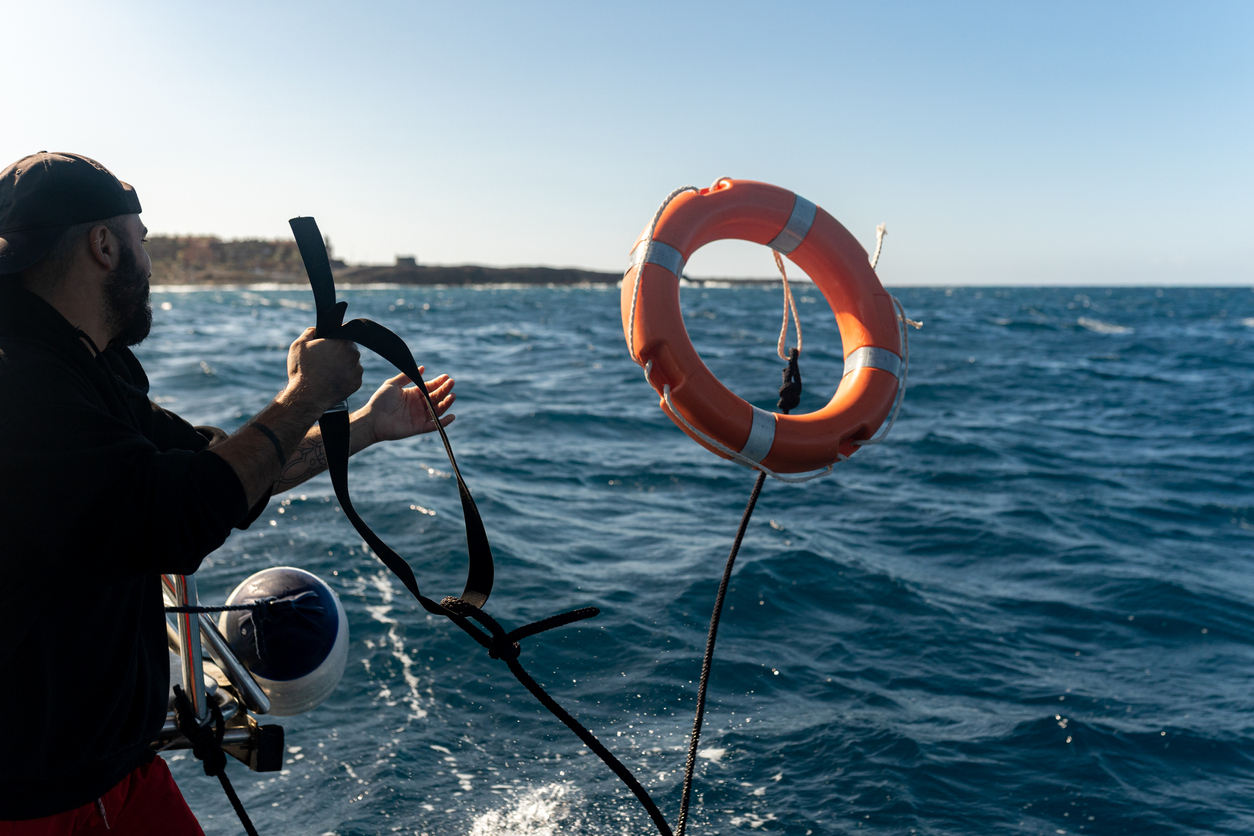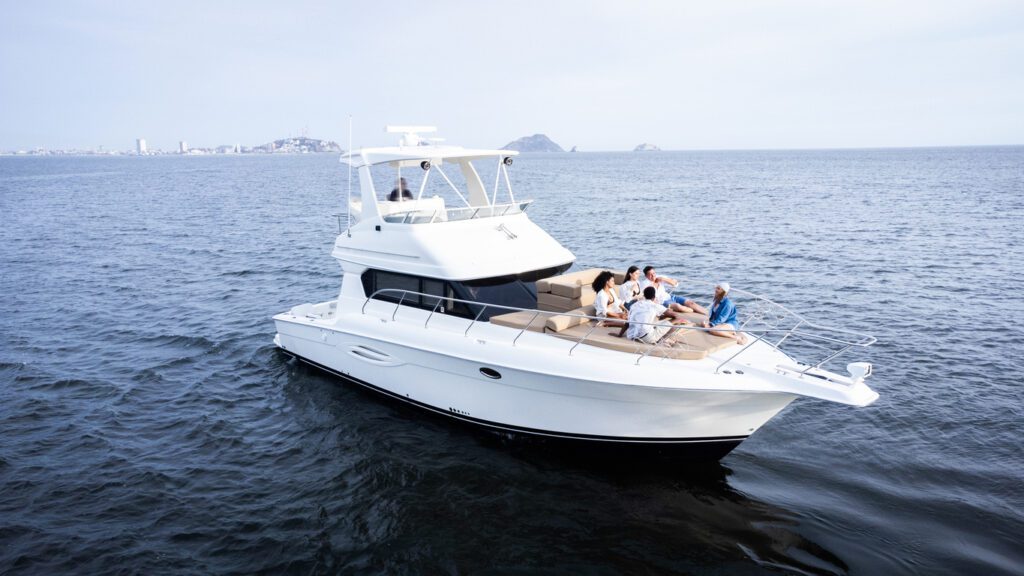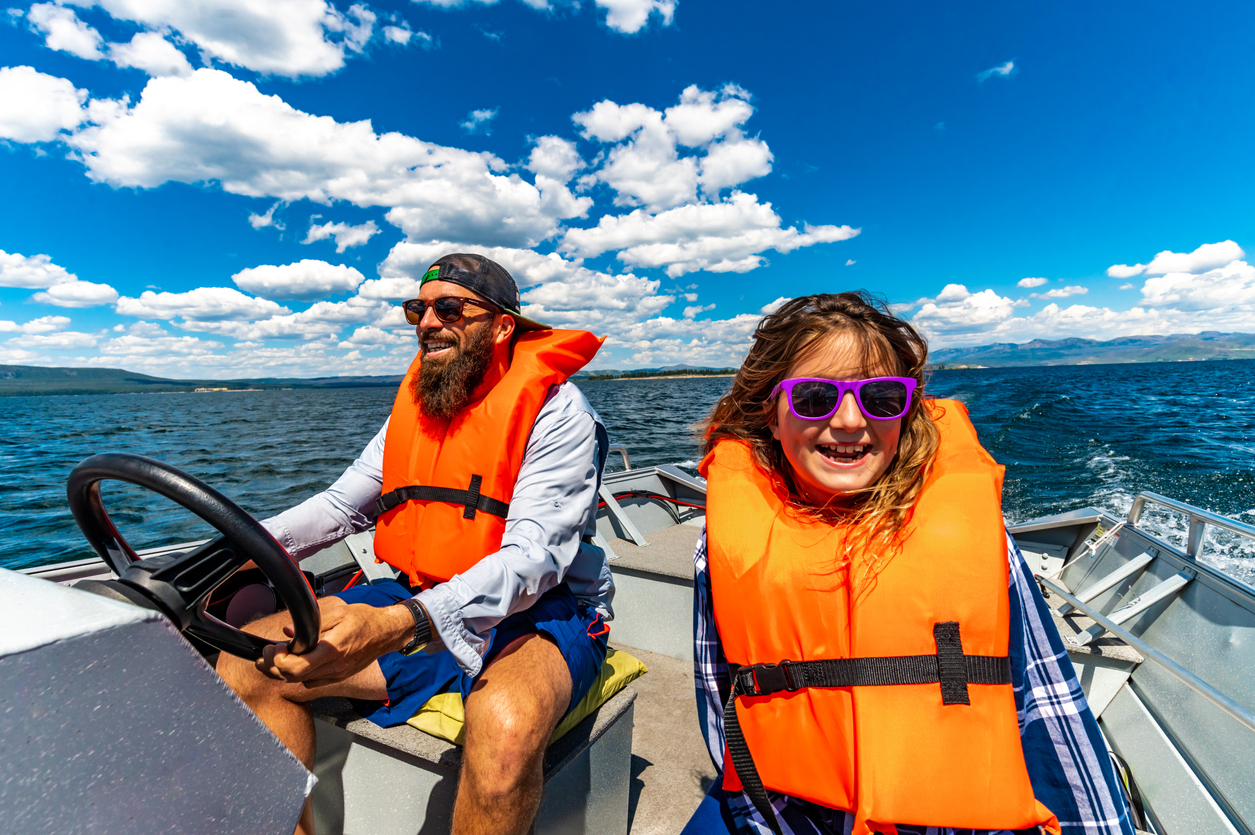When taking your boat out for a ride this summer, it’s possible for even a calm outing to be interrupted by a sudden boat accident, such as a passenger falling overboard. While no one expects it to happen, this type of emergency is more common than many realize and can put everyone on board at risk if handled poorly. To help keep everyone safe, it’s worth being prepared and knowing exactly what to do if someone goes into the water unexpectedly.
Immediate Actions After a Boat Accident
The critical first moments after a passenger goes overboard define the outcome of a boat accident. Acting fast and organized sets the tone:
- Don’t Panic: Keeping a level head will be critical in helping you organize rescue efforts.
- Get Everyone’s Attention: As loudly as you can, yell “man overboard” so that everyone on the boat (including the driver if that’s not you) is aware of the situation and looks out for the missing person.
- Maintain Visual Contact: Designate at least one passenger to keep an eye on the victim at all times.
- Turn Around and Slow Down: As soon as you notice that someone has gone overboard, slow down so you don’t get too far away from them. Next, turn the boat around while having the person visually focused on the swimmer call out the victim’s proximity to the boat.
Approaching the Person Safely
Once your immediate response plan has been implemented, you will need to take steps to approach the victim’s location safely. As the boat gets closer to the person in the water, the driver should approach slowly from downwind or downcurrent. This positioning helps avoid drifting into the swimmer and allows the boat to move gently toward them. Approaching too quickly or from the wrong angle increases the risk of hitting the individual or losing sight of them entirely.
When close enough, deploy a flotation device, such as a life ring or throw cushion, with an attached line of at least 50 feet. Toss the aid beyond the swimmer so they can grab the line and pull it toward themselves. If you’re unsure how far to throw the flotation device, keep in mind that overthrowing is better than not getting the device within reach, as the swimmer can still grab hold of the line.
Keeping the boat stable during this phase is critical. Once the person has the flotation aid, avoid changing direction or shifting the boat’s weight. At this point, patience and control matter more than speed.
Why Jumping in Can Worsen the Boat Accident
Although it may seem natural to jump into the water to assist, this can make the situation worse. Entering the water creates a second person in danger and increases the complexity of the rescue. The crew must now account for two individuals rather than one, which can lead to confusion or further accidents. Water conditions like temperature, current, or wind can make swimming or staying afloat more difficult than expected.
Only jump in if the person is a child, injured, or clearly unconscious. Wear a life jacket and tether to the boat for added safety. Most rescues are safest when carried out from the boat using flotation devices and steady, coordinated movements.
Retrieving the Person Safely
Once you’ve approached the victim and are close enough to throw them a line, turn off the engine to avoid propeller injuries during retrieval. Once they have a hold on the line or flotation device, start slowly pulling them in towards the boat. Deploy your boarding device if your boat has one to make it easier to get the victim back in the boat. Grab them under the arms as soon as the victim is within reach, as they may need help making it up the ladder. If your boat does not have a reboarding device, pull them on board over the stern.
Keep the boat balanced while pulling someone aboard, particularly if you have a small boat. Make sure to get help pulling the victim into the boat to reduce the risk of injury to you and the person you’re rescuing. You should also wear a life vest when helping a victim back into the boat. If you have trouble retrieving the person and/or they are injured, call 911 or the Coast Guard for rescue assistance.

What to Do After the Rescue
Even if the rescue seems successful, the individual may still be affected by cold water, fatigue, or injury. Begin by helping them warm up—remove wet clothing, wrap them in towels or blankets, and move them out of the wind. Next, assess their condition and provide any medical assistance if necessary. Shivering, pale skin, or confusion may be signs of hypothermia or shock, which require attention. At this point, start heading back towards land, as you will need to get them medical attention as soon as possible.
Even if the person does not appear injured, it is still critical that you have them evaluated by a medical professional, as they may have hidden injuries, especially if they are in shock, as they may not feel any pain right away. Evaluate the victim for hypothermia if the water temperature is cold or if they were in the water for a long time during the rescue.
Preventing a Boat Accident Before It Happens
While we hope your time out on the water this summer will be smooth sailing, the reality is that anything can happen. You must be prepared if one of your passengers goes overboard to ensure retrieval goes as smoothly as possible. Fortunately, there are steps that you can take to reduce the risk of accidents and injury when out on the water, including:
- Have man-overboard drills before setting sail. This will ensure everyone knows what to do if someone falls out of the boat.
- Wear a life jacket. Having your passengers wear life jackets at all times on your boat can be lifesaving should someone fall overboard.
- Avoid alcohol and drug use on your boat. As the driver, you must stay under the legal blood alcohol concentration (BAC) limit. However, even passengers should limit their alcohol intake, as they’re at greater risk of falling overboard if they’ve been drinking.
- Never ride on the bow of a boat when it’s moving. This can significantly increase your risk of falling overboard.
Ensure a Safe Boat Ride
A fall overboard during a boating trip can turn a fun day into a serious emergency. Acting quickly, keeping calm, and knowing what steps to take can prevent a tragic outcome. Preparedness and teamwork are your strongest tools in keeping everyone safe during a boat accident.
Feel free to contact us for more safe boating tips and added peace of mind when docking or launching. We offer reliable facilities and services at Chesapeake Harbor Marinas designed to support a safe, enjoyable boating experience. Learn more about the benefits of storing your boat with us or at one of our flagship marinas today.


